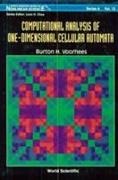Description
Product details
| Authors | Burton Voorhees, Burton H. Voorhees |
| Publisher | World Scientific Publishing Company |
| Languages | English |
| Product format | Hardback |
| Released | 01.12.1995 |
| EAN | 9789810222215 |
| ISBN | 978-981-02-2221-5 |
| No. of pages | 288 |
| Series |
World Scientific Series on Nonlinear Science Series A World Scientific Nonlinear Sci |
| Subject |
Natural sciences, medicine, IT, technology
> Mathematics
> Miscellaneous
|
Customer reviews
No reviews have been written for this item yet. Write the first review and be helpful to other users when they decide on a purchase.
Write a review
Thumbs up or thumbs down? Write your own review.

